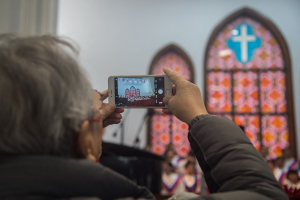More Older Moms Giving Birth as Teenage Pregnancy Rate Drops in the U.S.
The year 1990 registered one of the highest teenage pregnancy rates in the U.S. at 12 percent with an estimated one million pregnancies for females aged 15–19 years. However, only 521,626 gave birth while the rest resorted to abortion. America's health industry was alarmed due to the adverse health, social, and economic consequences of teenage childbearing.
The problem has been contained today as the birth rate among females aged 15 to 19 dropped to nine percent from 2013 to 2014. Even the teen birth rate decreased to 61 percent from 1991 to 2014. But the decline in teenage pregnancy didn't mean youngsters were having less sex. It is a result of an effective contraceptive campaign.
Taking over the trend of teenage pregnancy nowadays is the rise of older moms. These are Generation X and Y women who prioritized their careers during their prime then suddenly decided to have a baby during their late 30s and 40s, the stage when getting pregnant becomes complicated.
New statistics in pediatrics reveal the proportion of first births to women 30 and older in the U.S. rose from 24 percent in 2000 to 30 percent in 2014. Moreover, the birth rate among women 40–44 rose by two percent from 2013 to 2014. The trend was made even "cooler" now by celebrities who got pregnant at this age range like Janet Jackson, Jennifer Lopez, Halle Berry and Celine Dion.
The concern is that women who get pregnant during midlife face potential health risks, much like their teenage counterparts, like kidney failure, shock, acute heart problems, sepsis and being admitted to intensive care. Doctors advise that the best time to get pregnant is from 20 to 34 years old.
But for Dr. Petra Casey, obstetrician-gynecologist at Mayo Clinic in Rochester, Minnesota, age is not the be-all and end-all for a safe pregnancy. A more critical risk factors for the mother are her underlying health conditions such as high blood pressure, diabetes, HIV and obesity.
"Some women are healthy at 40 and some women are really sick at 20, and you have to provide that individualized kind of care and look beyond just plain age," she said. "I had a child at 31 and then 38 and then 41, and all of my pregnancies have been blessed and pretty uneventful," she added.



























